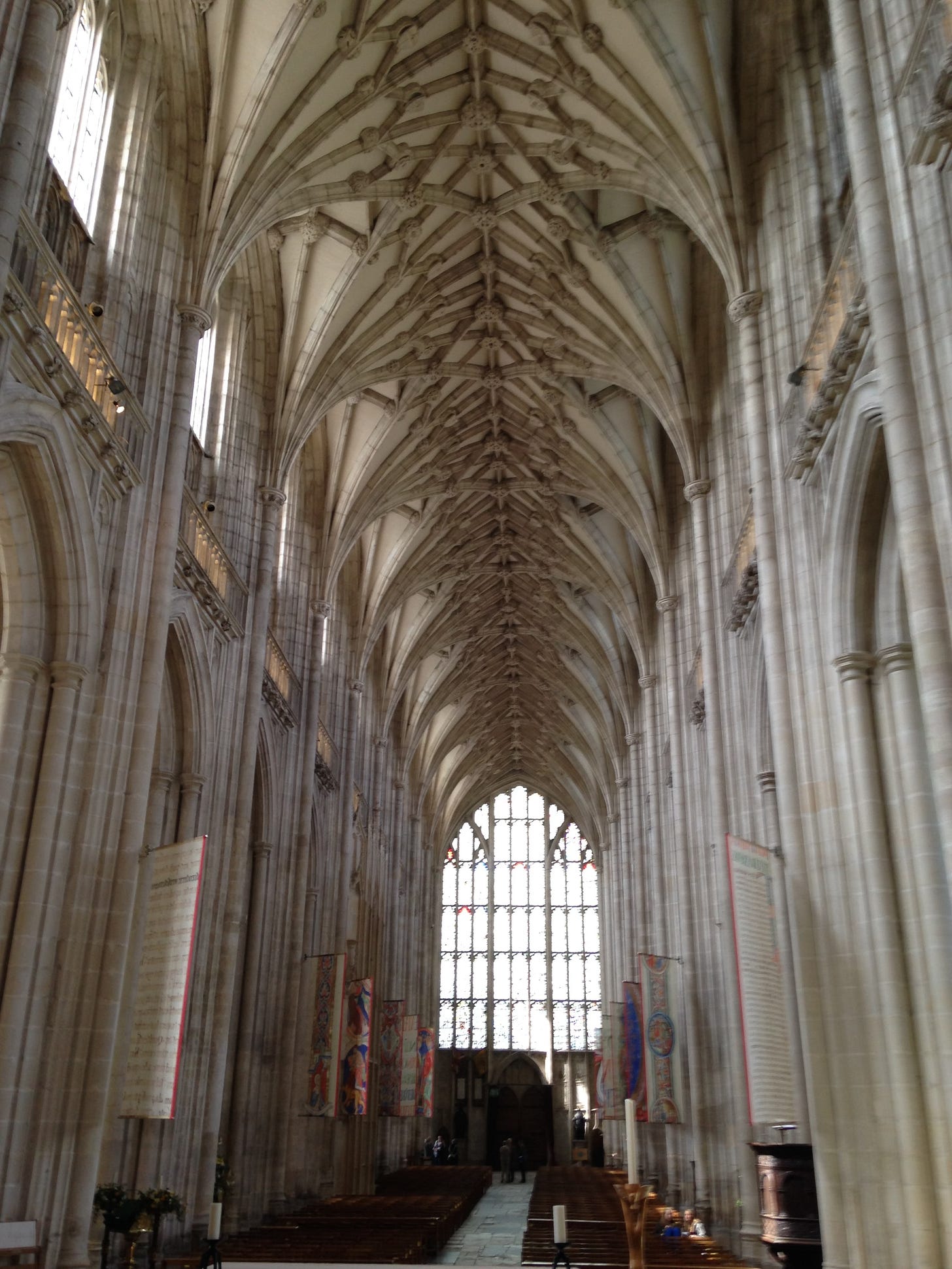I wrote this piece in 2014, shortly after returning from an extended trip to Burma, Vietnam and Cambodia.
I came back from South-East Asia saturated with images of pagodas and temples. But beyond the exotic beauty of the golden stupas, intricate carvings, jewel-like mosaics, and faded frescos, the impression that stays with me is one of buildings in everyday use. Everywhere we went, families were making offerings of food, burning incense, and saying prayers; monks were chanting, or having breakfast, or just sweeping the courtyard. I’ve been to two cathedrals in the last couple of weeks, one English and one Welsh. It is easy to take for granted what is on your own doorstep and it was good to be reminded that we too have beautiful religious buildings with ornate carvings in wood or stone, and vivid stained glass illuminating the more muted colours of medieval tiles and wall paintings. But most of the people I saw were tourists, not worshippers or priests. In England, the church is no longer part of everyone’s daily life – and indeed I am not a churchgoer myself. Is it therefore illogical to be glad that other people are still practising Christians? Probably, but I believe that a deconsecrated historic building, however magnificent, would not have the same impact as one where prayers are still being said and enthusiastic volunteers welcome you.
In the far west of Wales, on the wild Pembrokeshire coast, tiny St Davids has just 2,000 inhabitants but its cathedral gives it city status. It is such an important place of pilgrimage that two journeys to St Davids are judged equivalent to one to Rome. When I visited on Easter Saturday, I was met at the door by a volunteer guide. Without him I might not have noticed the distinctive slope of the nave, nor many of its other features. The original building dates back to the twelfth century but over time it sustained damage both from natural causes (earthquake), and human agency (Roundhead soldiers), and was heavily restored in Victorian times.
The ancient city of Winchester was the capital of England in Saxon times and there has been a church on the site of the cathedral since the seventh century. I was fortunate to visit with an enthusiastic friend who volunteers as a guide and was able to bring its rich history to life. Over the centuries kings and queens have been baptised, married and buried there. Jane Austen’s tomb is in the nave. The cathedral treasures include the Winchester Bible, an illuminated manuscript dating back to the twelfth century, and a modern statue by Antony Gormley that stands reflected in the watery crypt.
Like St Davids, Winchester suffered at the hands of the Roundhead troops, and was in danger from the elements – in this case flooding and subsidence. It was saved by the heroic efforts of a diver from Portsmouth. For six years from 1906 William Walker worked in the water under the cathedral filling trenches with bags of cement. Thanks to his work the water was eventually pumped out and the cathedral walls were successfully underpinned.
Volunteering as a cathedral guide, like much day-to-day voluntary work, may feel like just a small thing. And yet… the last words of St David to his followers were said to be, ‘Be joyful. Keep the faith. Do the little things.’ His cathedral and others, including Winchester, are being kept alive both in structure and spirit by people doing just that – and on the whole it’s not bad advice for non-believers either!






